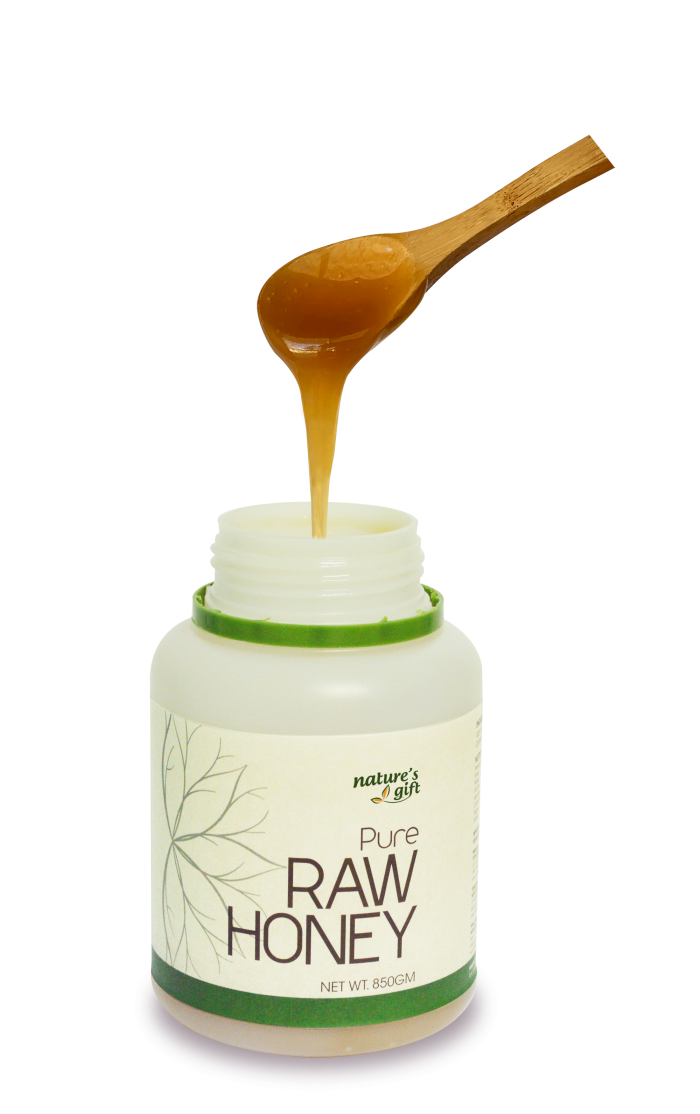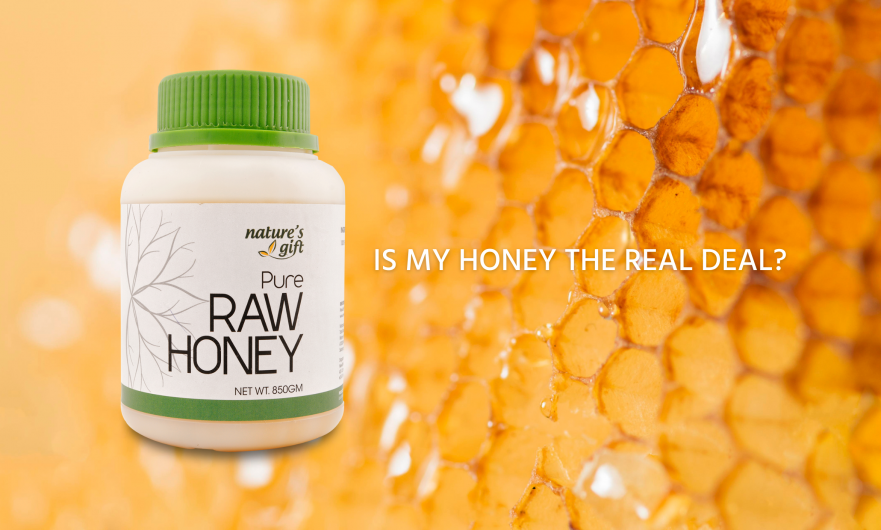“Raw Honey”, “Pure Honey”, “Natural Honey”, and so on… Labels on honey jars can be very confusing and make you wonder how they are different and which honey to buy. We’re here to help!
- Regular honey: Heated, pasteurised, filtered. Some may have hidden sugar, corn syrup or other sweeteners to cheapen production. Most of them contain additives and flavouring. While not all regular honey is bad, it is hard to know which ones are healthy or unhealthy without doing a test beforehand.
- Natural honey: No artificial additives are added but they may contain additives that are naturally derived such as corn syrup and brown rice syrup to reduce cost. Also, they are pasteurised and filtered.
- Pure honey: No additives whatsoever (whether artificial or natural ones) are added but they are pasteurised and filtered.
- Raw honey: The beekeepers only strain the honey that comes straight from the honeycomb to remove tiny bits of debris such as beeswax before packing. No additives are added, and the honey is unheated, unpasteurised and unfiltered.
Notice that only raw honey does not go through heat, pasteurisation and filtration. The benefit of not heating and processing honey is that the naturally occurring enzymes, vitamins and minerals are preserved, and you get the full benefits of honey – its antioxidants, antibacterial and antiviral properties.
That is why raw honey is the best choice!

NewLife™ Pure Raw Honey
- 100% pure raw honey. It has approximately 22 amino acids, 31 different minerals, and a wide range of vitamins and enzymes. What is most impressive about raw honey is that it contains nearly 30 types of bioactive plant compounds. These are called polyphenols, and they act as antioxidants.
- Our honey is extracted straight from the honeycombs of beehives located in the lush pastures of New Zealand, in areas that are entirely free from insecticides and pesticides.
- No heat is applied during extraction. After extraction, the honey is strained and packed, bypassing all commercial processing methods.
- In addition, the collection, processing and supply are strictly controlled by the New Zealand Food Safety Authority (NZFSA) to ensure that the honey is free from pests and diseases.
Frequently Asked Questions about NewLife™ Pure Raw Honey
Why does NewLife™ Pure Raw Honey have different colour and consistency from time to time?
The colour, consistency and flavour of raw honey may change depending on what flowers the bees pollinated. Therefore, our honey may vary depending on the season and time of harvesting because it is 100% natural and not processed. Only commercial processing can guarantee you 100% consistency in colour and texture.
What is the ‘stuff’ floating in my Pure Raw Honey?
Sometimes, you may notice some particles in your NewLife™ Pure Raw Honey. This is because our honey is not pasteurised or filtered. These particles are natural substances found in honey such as bee propolis and bee pollen. Sometimes these debris are too fine to be completely removed during the straining step, but they are 100% safe to consume and in fact, they add goodness and nutrients to the honey.
Also, some of these particles can be crystals, a natural characteristic of real raw honey.
My honey has separation and crystals. Is it spoilt? Or is it not 100% pure honey?
A common myth about honey is that pure honey does not crystallise or separate. This is not true. In fact, if your honey crystallises or separates, it is more likely to be 100% natural!
It is a natural process for honey to separate and crystallise over time. The presence of bee pollen and propolis in raw honey also accelerates this process.
Some honey crystallises uniformly; some partially crystallises and forms two layers, with the paler coloured, dense crystallised layer on the bottom and a darker coloured less dense honey on top.
Separation and crystallisation do not affect the quality of the honey and are perfectly fine to consume. Best practices for storing NewLife™ Pure Raw Honey:
- Keep in a tightly sealed container.
- Store at room temperature. The optimum temperature for storing honey is 21 to 27 degrees Celsius.
- Avoid areas with direct sunlight or other types of direct heat (i.e., stove or oven).
- Use a clean, dry spoon to scoop out honey to prevent contamination.

